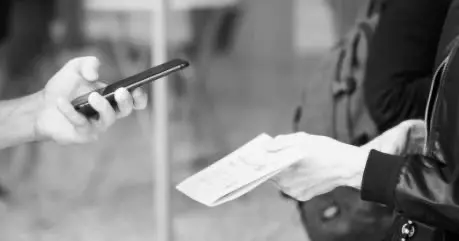How to Equip Your Event Check-In Stations?
A smooth attendee experience starts with a well-equipped check-in area and reliable access control. And while software plays a key role, the hardware you use matters just as much.
A smooth attendee experience starts with a well-equipped check-in area and reliable access control. And while software plays a key role, the hardware you use matters just as much.
This guide isn’t about staffing or training — those topics deserve their own space. Instead, we’re focusing on the technical side of event check-in: the gear every organizer should have on hand to ensure fast, error-free reception.
Our Event Management Software includes dedicated modules for check-in and access control, enabling quick verification of participant data and assigned permissions. But to get the most out of these tools, you’ll need the right setup. So what should you bring? The ideal check-in station includes a laptop, a QR code scanner, and a label printer.
Desktop PCs and all-in-one machines can work, but we recommend compact laptops — ideally 11–13" models with at least two standard USB ports. Why two? One for the QR code scanner, the other for your badge printer. Laptops are portable, space-efficient, and have built-in power, which can be a lifesaver during a blackout. You can even move them from reception to access control if needed, saving time and resources.
When choosing laptops (sometimes called netbooks), consider size, USB port count, operating system, and price. Our top pick: Linux-based laptops, especially those running lightweight distributions like Xubuntu. Why? From experience, few things are more frustrating than a surprise Windows Update kicking in just as attendees start arriving.

Laptops with Linux pre-installed — or with no OS so you can install Linux yourself — tend to be significantly cheaper than their Windows or macOS counterparts. All you really need is a browser like Google Chrome or Mozilla Firefox. Linux updates don’t interrupt your workflow; you control when they happen. That means no scrambling to update a dozen devices before your next event.
When CONREGO provides on-site check-in support (including hardware, staff training, and supervision), we only use laptops that meet these specs. I'm a big fan of optimization, so our devices are lightning-fast and ready to go after we place a couple of shortcuts to the CONREGO app on the desktop.
If you’re not printing badges on-site—perhaps you had them pre-printed by a vendor — then tablets are a great choice. With the CONREGO Check-In app for Android and iOS, your team can quickly mark attendance using tablets at the reception desk.
Mobile devices also shine in access control scenarios. The CONREGO Check-In app turns any smartphone or tablet with a camera into a fully functional QR scanner — no extra hardware needed. Perfect for entrances to VIP areas or session halls.
At CONREGO, we use Apple iPads because I personally like the iOS ecosystem. But both iOS and Android tablets will get the job done—the key is battery life. If you’re renting devices, always test the battery capacity. A weak battery can derail your entire operation if you’re forced to hunt for power outlets.
Earlier versions of CONREGO supported barcode scanners, but we’ve since phased those out. QR codes are far more versatile. They enable simultaneous use across mobile devices and laptops with connected scanners. If you want to avoid using tablets at reception or need to print badges on-site, you’ll need a physical QR scanner.
Scanners behave like keyboards — they convert a scanned QR code into a text string (usually a URL). For best results with CONREGO, your scanner must add a tab key after each scan, mimicking what happens when you press TAB on your keyboard.

Any 2D scanner that can be configured to append a TAB after each scan will work. Most modern models allow this via programming guides included by the manufacturer. We recommend reviewing documentation before buying. Proven models include:
If you want to personalize badges on-site, you’ll need the right printer — and the type depends on your badge format. Since CONREGO is a web app that generates and sends PDF files to printers automatically, compatibility isn’t an issue. Just make sure your printer has drivers for your chosen OS, especially if you’re using Linux.
For plastic cards, we recommend Evolis printers. They’re fast, reliable, and deliver 300 dpi resolution. One tip: never print on cards with holes punched in advance — it can damage the printhead.

We’ve used Brother QL series printers for years. They’re small, fast, cost-effective, and compatible with multiple label formats (e.g., 62x100 mm, 38x90 mm, and even 20x20 mm). These mini labels are perfect for wristbands.
Their speed, low cost, and Linux driver availability make Brother QL printers a top choice for on-site events.
For more durable labels, consider Zebra thermal transfer models. They print in 300 dpi resolution and support labels up to 104 mm wide.
If you can’t count on venue Wi-Fi, bring your own LTE router with a data-enabled SIM card. We recommend models like the TP-Link M7350 or Zyxel NR2101. They’re reliable, support multiple connections, and offer solid coverage. Make sure your SIM card works at the venue and has enough data for the day. For maximum reliability, look for routers with dual SIM failover.
And don’t forget power! If the venue setup is even slightly questionable, pack a UPS (uninterruptible power supply). Better safe than sorry.
That wraps up our checklist. If you’d like to learn more about on-site attendee management and access control, check out our full guide: How to Ensure Efficient Event Check-in?.
Take a look at the complete setup in action and see if it meets your expectations:
